The Art of Comedy in Crossdressing: A Fun Twist to Gender Bending
Crossdressing can be a liberating experience for many people, allowing them to express their gender identity on their own terms.
Furthermore, it creates a valuable opportunity for self-expression through comedy by challenging perceived expectations around male and female roles in society.
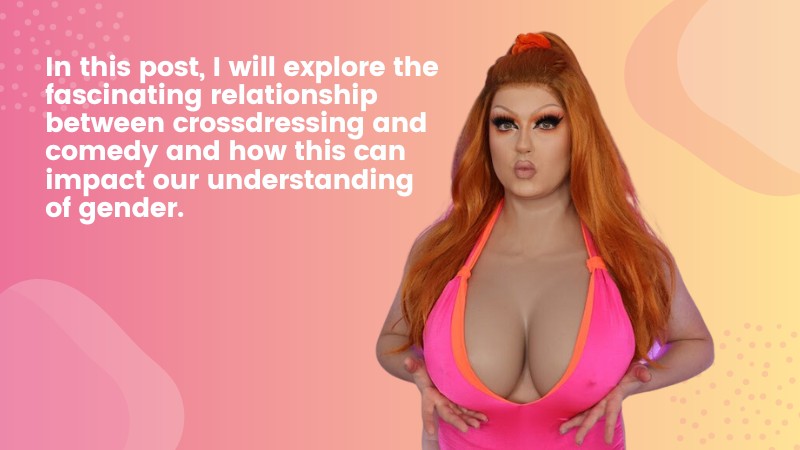
By embracing the intersection of crossdressing and humor, we create an inclusive space for everyone – regardless of gender identity or expression – to laugh together at the absurdity of such traditional norms.
In this post, I will explore the fascinating relationship between crossdressing and comedy and how this can impact our understanding of gender.
I’ll dive into the significance of laughter when it comes to breaking free from socially imposed boundaries in order to provide multiple perspectives on gender presentation from within our communities and beyond!
Historical Overview
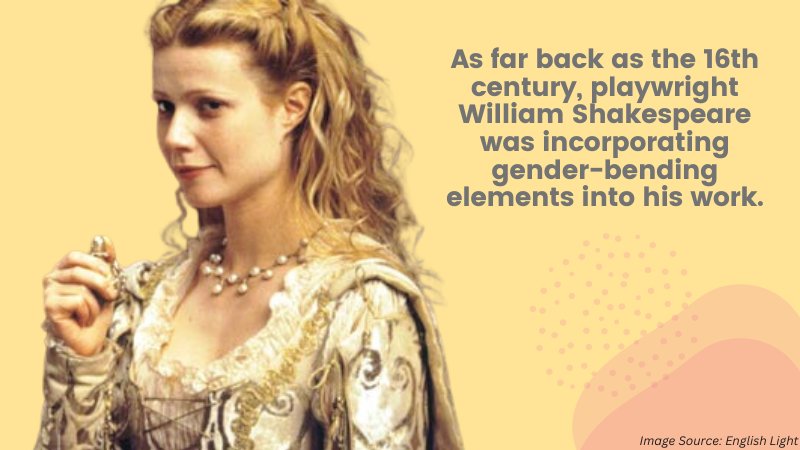
A rich historical background exists regarding crossdressing for comedic purposes.
As far back as the 16th century, playwright William Shakespeare was incorporating gender-bending elements into his work.
His plays featured characters like Viola in Twelfth Night and Rosalind in As You Like It, both of whom dress up as men to hide their true identities.
Using the guise of a man provided an avenue for the exploration of their own feelings and thoughts.
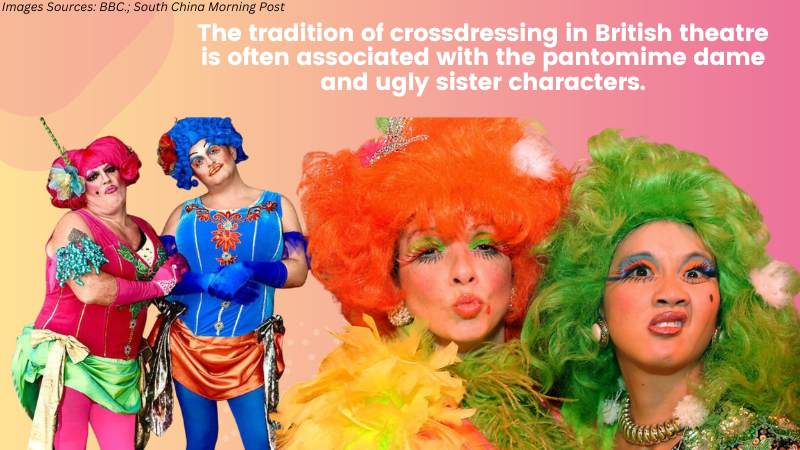
The tradition of crossdressing in British theatre is often associated with the pantomime dame and ugly sister characters.
These are typically older men playing female roles that bring plenty of humor to the stage, as they often appear more comical than feminine.
This exaggerated behavior can be seen today in productions like “Jack and the Beanstalk,” “Cinderella,” and “Aladdin.”
The present-day use of crossdressing in comedy is just as popular as it ever has been.
In television shows like “Monty Python’s Flying Circus,” drag queens are used to parody social norms and surprise audiences with their quick wit.
Evolution of Crossdressing in Comedy
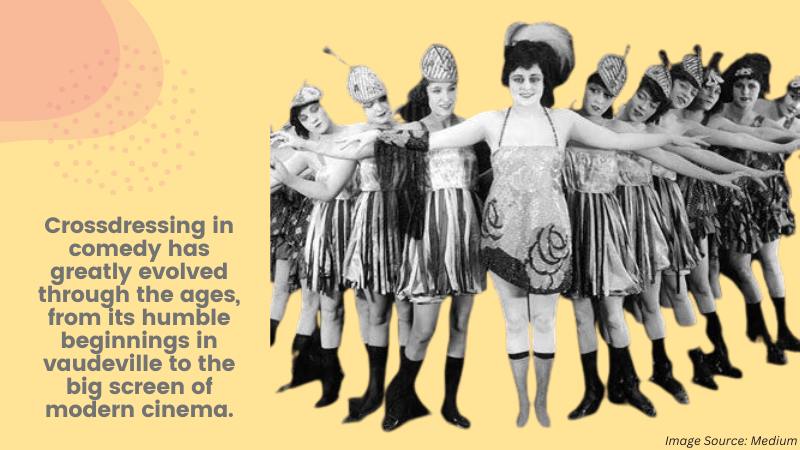
Crossdressing in comedy has greatly evolved through the ages, from its humble beginnings in vaudeville to the big screen of modern cinema.
Vaudeville was a popular form of entertainment during the late 1800s and early 1900s, which featured variety acts such as comedy skits and musical performances.
Crossdressing was often used as a comedic device in these shows, with male actors playing female roles for comedic effects.
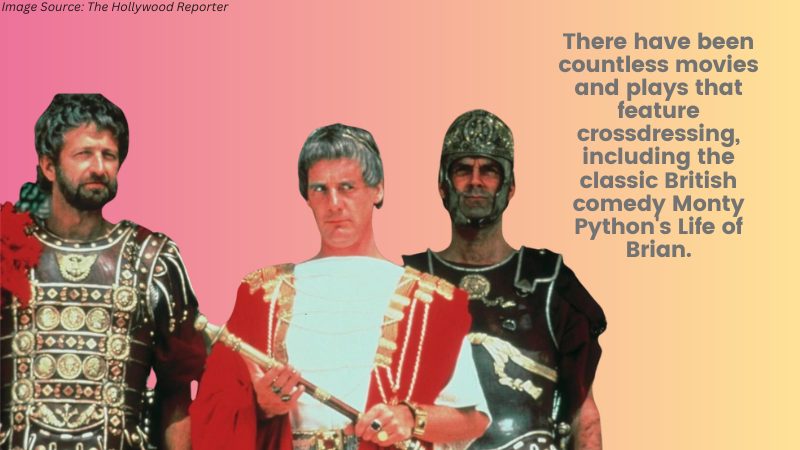
Crossdressing has continued to be a popular form of comedy ever since, with many modern stand-up comedians incorporating crossdressing into their acts.
In addition, crossdressing is commonly used in sitcoms and other television programs – often as a way of playing up gender stereotypes for comic effect.
And, of course, there have been countless movies and plays that feature crossdressing, including the classic British comedy Monty Python’s Life of Brian.
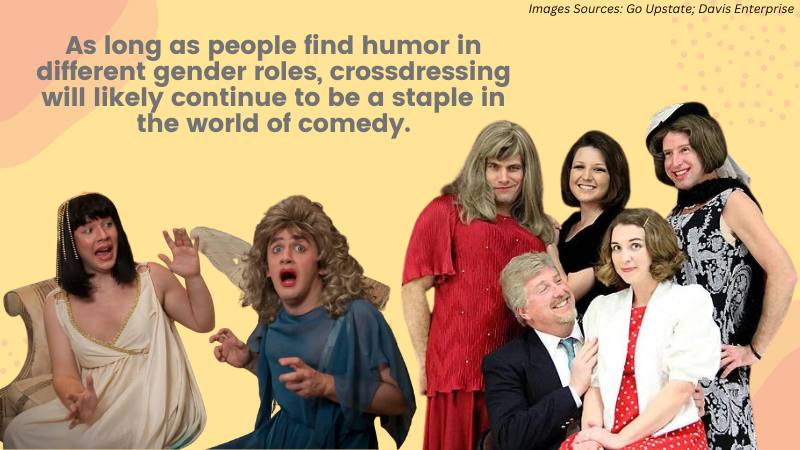
Overall, it is clear that crossdressing has been an integral part of comedy for many years, and its use shows no signs of slowing down.
As long as people find humor in different gender roles, crossdressing will likely continue to be a staple in the world of comedy.
Famous Crossdressers in Comedy
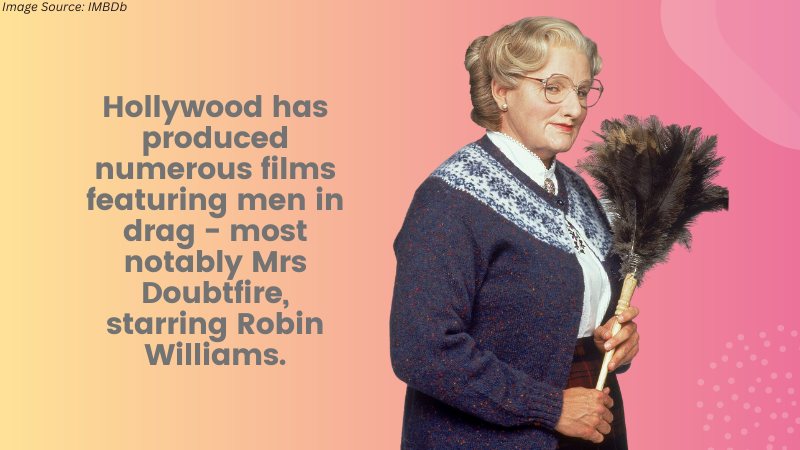
When it comes to comedy, crossdressing can be a powerful tool for getting laughs.
One of the earliest examples of this is the classic film ‘Some Like It Hot,’ which follows two jazz musicians masquerading as women to escape from mobsters.
Since then, Hollywood has produced numerous films featuring men in drag – most notably Mrs Doubtfire, starring Robin Williams.
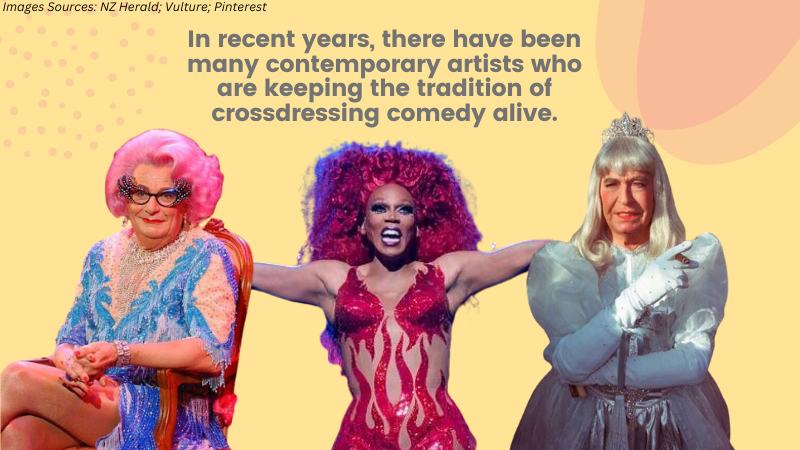
From the legendary Milton Berle to contemporary comedians like Barry Humphries and RuPaul, crossdressing has been a popular tool used to make audiences laugh.
Crossdressing can be seen as an act of liberation that allows people to explore different aspects of their identity, including gender.
This is why it has become such an integral part of comedy – allowing us to see characters in a whole new light.
The way that these crossdressing artists have embraced their gender expression has not only been inspiring but also incredibly entertaining and funny.
In recent years, there have been many contemporary artists who are keeping the tradition of crossdressing comedy alive.
Some examples include Drag Race contestants like BenDeLaCreme, Jinkx Monsoon, and Bianca Del Rio.
Not only do these performers challenge traditional gender roles, but they show us that there is no limit to comedy – you can be whoever you want to be on stage!
The Role and Impact of Crossdressing in Comedy
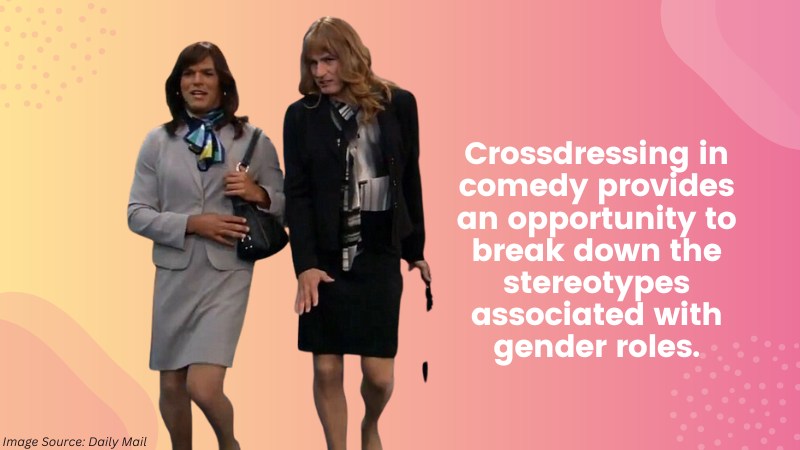
The role and impact of crossdressing in comedy is a complex one, with many levels of meaning and power at play.
On the surface, it can be seen as harmless fun, but when looked upon more deeply, it can also act as a subversive form of social commentary.
By equipping characters with clothes that clash with their assigned gender roles, crossdressing disrupts our ideas about what it means to be male or female and opens up exciting new possibilities for comedy.
Crossdressing in comedy provides an opportunity to break down the stereotypes associated with gender roles.
By presenting characters who don’t conform to our expectations of how men and women should look or behave, crossdressing can challenge long-held beliefs about traditional gender identity.
This kind of humor has the power to subvert and challenge our ideas about gender roles, allowing audiences to think more deeply about their own preconceptions.
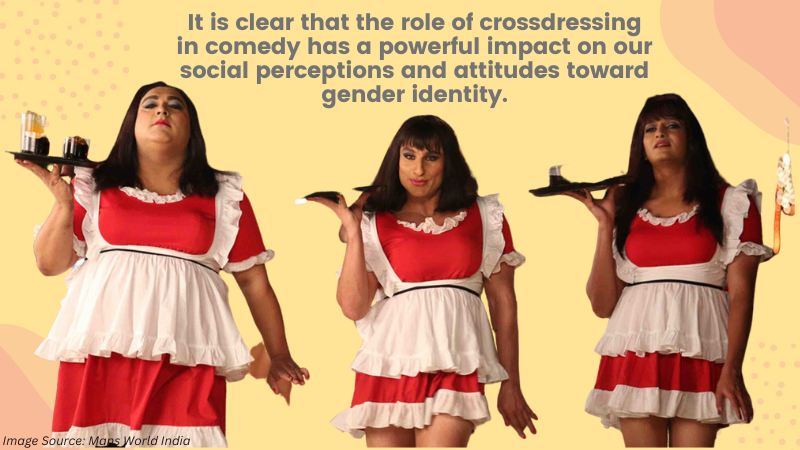
At the same time, however, crossdressing in comedy can also reinforce traditional gender norms.
Humorous effect
Characters who dress up as members of the opposite sex often do so for humorous effect – they become exaggerated versions of what society expects them to be, and this can lead to jokes that will make people laugh without really questioning the stereotypes they rely upon.
Ultimately, laughter is an important tool in understanding and accepting different gender identities.
Crossdressing in comedy gives us a chance to laugh at what might otherwise be seen as taboo or offensive, allowing us to confront our preconceived notions of gender roles in a safe and lighthearted way.
By using humor to break down boundaries, crossdressing in comedy can lead us to a more tolerant and accepting society.
It is clear that the role of crossdressing in comedy has a powerful impact on our social perceptions and attitudes toward gender identity.
Through laughter and thoughtful discourse, this form of comedy can be used as an effective tool for challenging and reinforcing traditional gender roles.
By exploring these themes, we can move towards a more accepting and diverse society.
Crossdressing in Comedy across Cultures
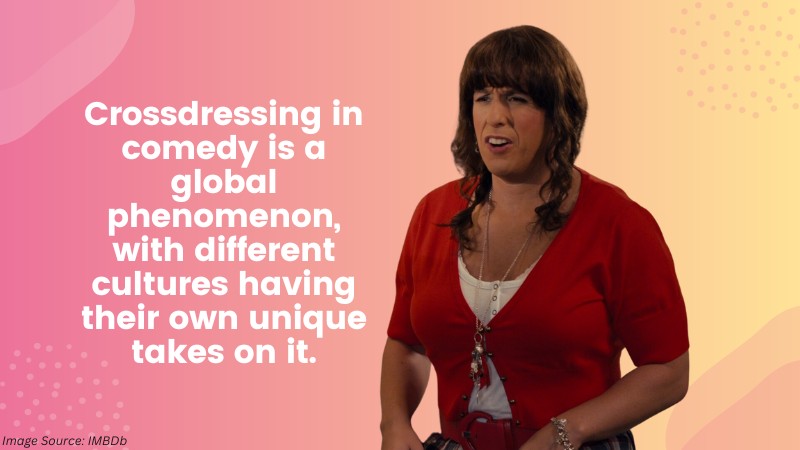
Crossdressing in comedy is a global phenomenon, with different cultures having their own unique takes on it.
The humor that comes often draws on cultural stereotypes and gender roles to create comedy but can be seen as insensitive or offensive if it’s not done properly.
It’s important to understand the cultural sensitivities of each society when crafting crossdressing jokes so as not to be seen as offensive or insensitive.
In traditional Indian culture, for example, crossdressing is more of a spiritual tradition than humor or entertainment.
It’s embedded in the Hindu religion and its spiritual practices, such as the ritual of Mohiniattam, where females impersonate the god Vishnu.
In contrast, in modern Japan, crossdressing in comedy often relies on stereotypes of men and women and reinforces gender roles.
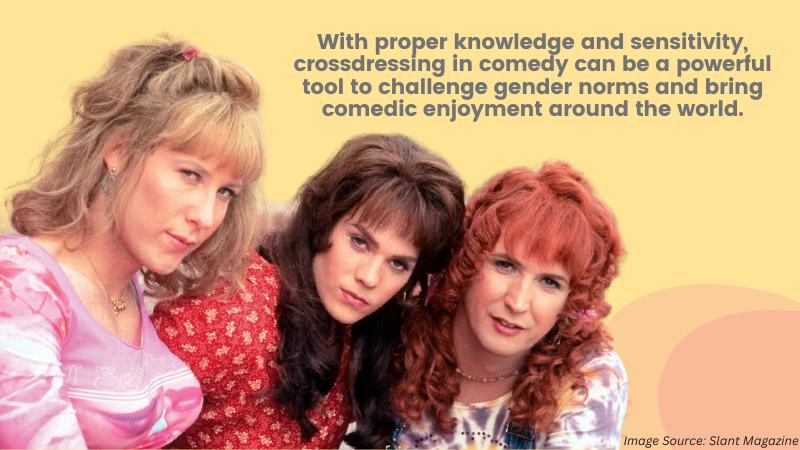
A key factor to consider when crafting crossdressing humor is the audience – what may be seen as funny in one culture may not necessarily work in another.
It’s important to know your audience so that you can tailor jokes accordingly and create a space where everyone feels included and respected.
By understanding the nuances and cultural sensitivities of each society, crossdressing humor can be used effectively to create a comedy experience that’s enjoyable for everyone.
With proper knowledge and sensitivity, crossdressing in comedy can be a powerful tool to challenge gender norms and bring comedic enjoyment around the world.
Criticism and Controversy
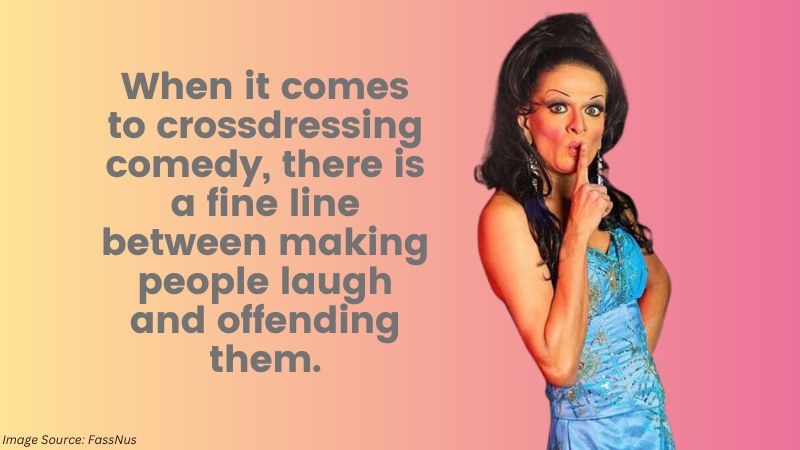
When it comes to crossdressing comedy, there is a fine line between making people laugh and offending them.
It often relies on the context of the joke, as well as how it’s presented.
For example, if someone jokes about a transgender person in a way that belittles their identity or implies they are not worthy of respect, then that joke is likely to be considered offensive.
However, if the joke is presented in a way that acknowledges and respects the individual’s identity, then it might be more well-received.
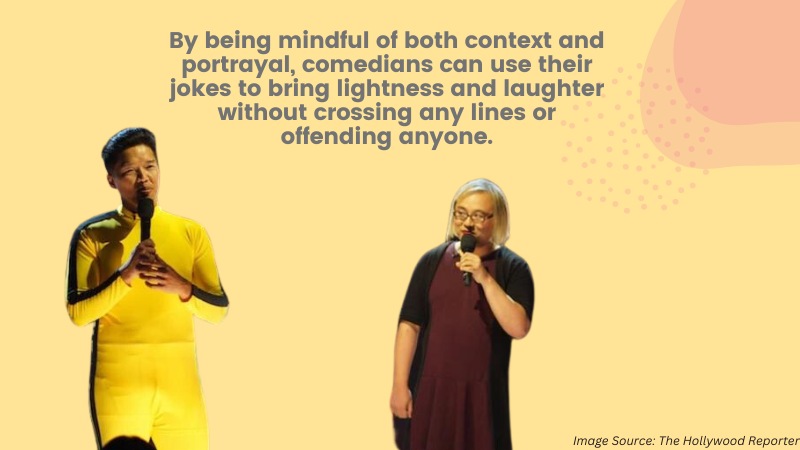
In addition to this, there are also certain misconceptions about crossdressing comedy that can lead to criticism.
For instance, some people believe that crossdressing jokes only rely on stereotypes and do not reflect the complex reality of gender identity.
To address this, comedians should make sure to include a variety of voices in their comedy routines, representing different backgrounds and identities.
In order to avoid offending anyone, comedians should also be careful to ensure that their jokes are respectful and inclusive rather than relying on any outdated or offensive tropes.
Ultimately, when it comes to crossdressing comedy, the goal should be to entertain and make people laugh while also respecting the identities of everyone involved.
By being mindful of both context and portrayal, comedians can use their jokes to bring lightness and laughter without crossing any lines or offending anyone.
With this in mind, joke-tellers can create a space where all genders are treated with equal respect and dignity.
Conclusion
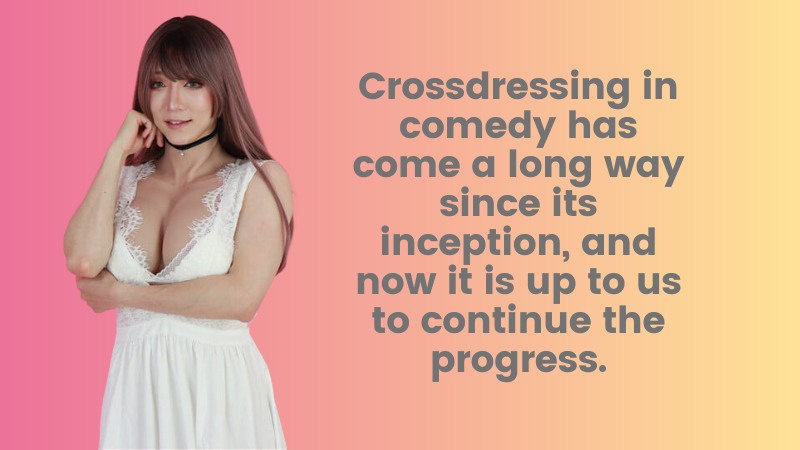
Crossdressing in comedy is a complex cultural phenomenon that can be both subversive and empowering for its participants.
The future of crossdressing in comedy may include greater inclusion, a collaboration between cisgender and transgender performers, and a better understanding of the complexities of gender that comedy can bring to light.
By embracing the spectrum of gender representation in comedy, we can begin to see how comedy can lead to greater acceptance of diverse gender identities, as well as more laughs and meaningful conversations.
We can look forward to a brighter future in which all genders can feel comfortable expressing themselves through comedy without fear of judgment or ridicule.
Crossdressing in comedy has come a long way since its inception, and now it is up to us to continue the progress.
We must make sure that we listen to and amplify the voices of those who have been marginalized, excluded, or stereotyped.
It is only through increased representation and collaboration that we can create a more inclusive comedy landscape – one in which all individuals feel safe and respected.
With this, we can ensure that comedy remains an art form that celebrates differences and encourages understanding.
1 comment
Leave a Reply
- Best Crossdresser Destinations to Visit in Africa
- 10 Best LGBTQ+ Manga 2024
- How To Become a Drag Queen Star? A Step-By-Step Guide to Creating Your Drag Queen Persona
- Top 5 Reasons Why People Crossdress: A Deep Dive into the Psychology
- Passing As a Crossdresser: What Does It Mean to Come Out?
- Penis Play and Penis Size for FTM Crossdressers
Established in 2009, We are a recognized manufacturer and seller of professional crossdressing products.
It is our aim to become not just the most creative manufacturer but also a very considerate seller, as we provide the best quality products for crossdressers all around the world.
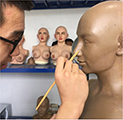
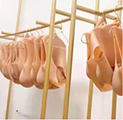



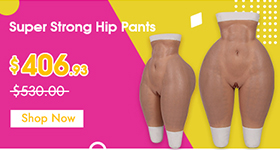





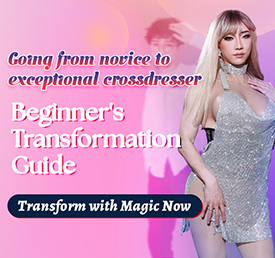
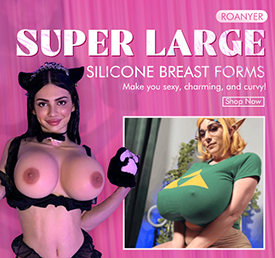
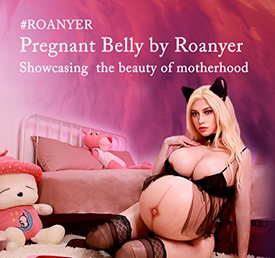
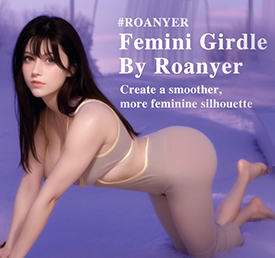



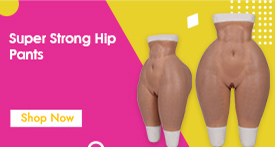


 Breast Forms
Breast Forms  Body Suit
Body Suit  Realistic Mask
Realistic Mask  Femini Girdle
Femini Girdle Hip & Butt Enhancement (8)
Hip & Butt Enhancement (8) Penis Prosthesis
Penis Prosthesis Fake Muscle
Fake Muscle Bikini
Bikini  Wig
Wig  Corsets
Corsets Course
Course service@roanyer.com
service@roanyer.com +8618652200711
+8618652200711 Facebook
Facebook YouTube
YouTube Twitter
Twitter Instagram
Instagram





Sono stanco di essere un uomo voglio diventare una bellissima donna vorrei essere coccolata dalla estetista poi andare anche dalla parrucchiera essere una bellissima donna sia dentro che fuori vorrei vivere come una donna sentire il profumo della vostra volontà perché essere una donna sentire i tacchi sentire tutto il giorno quello che una donna si mette